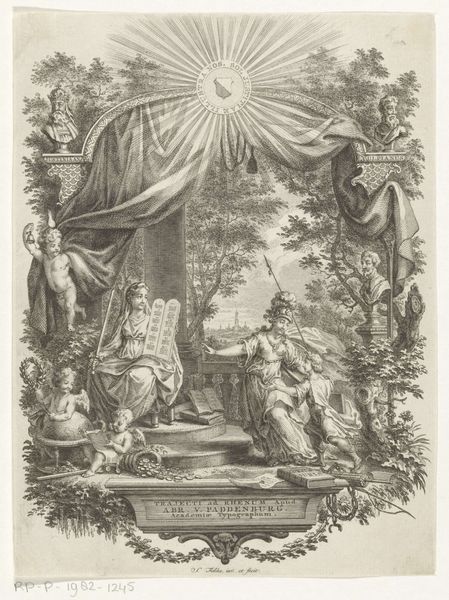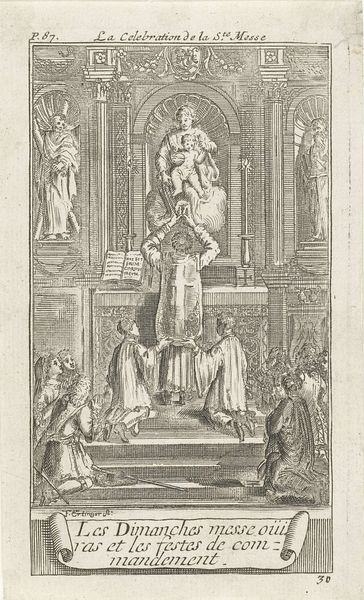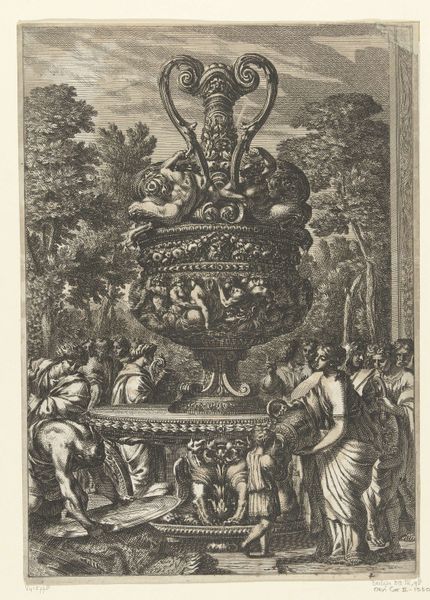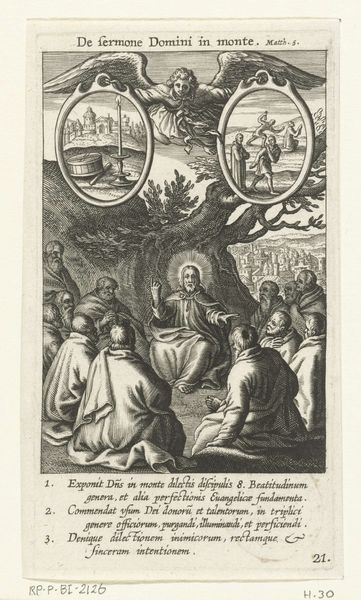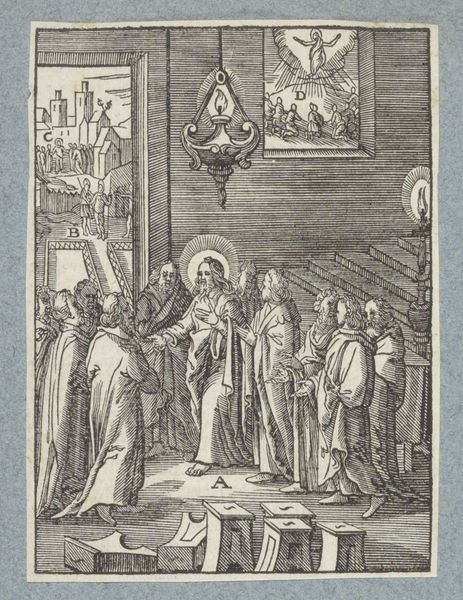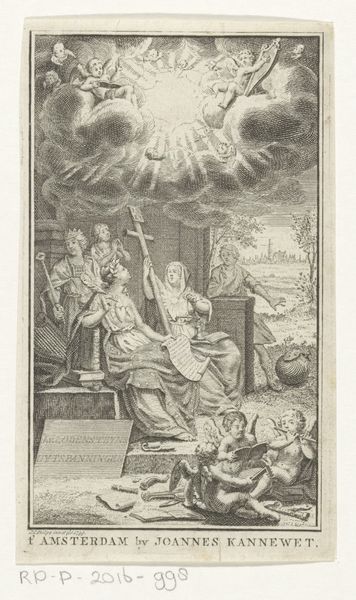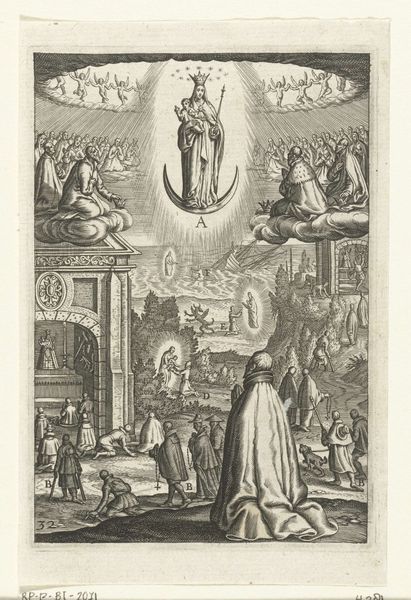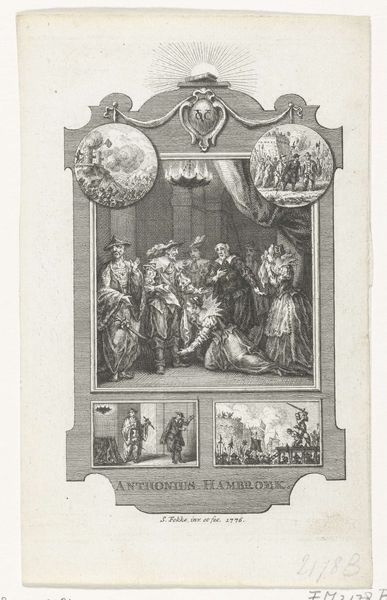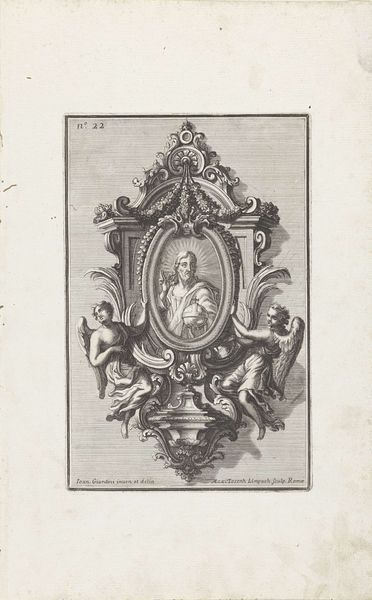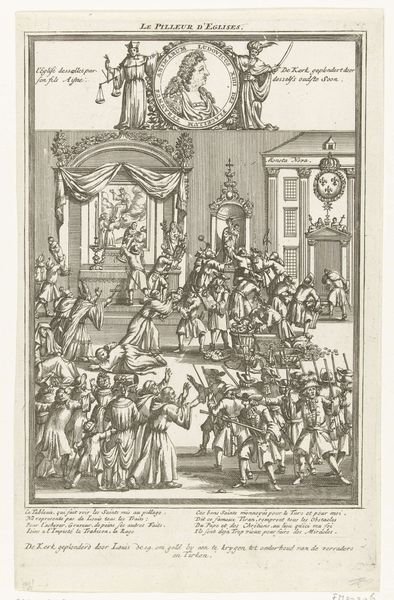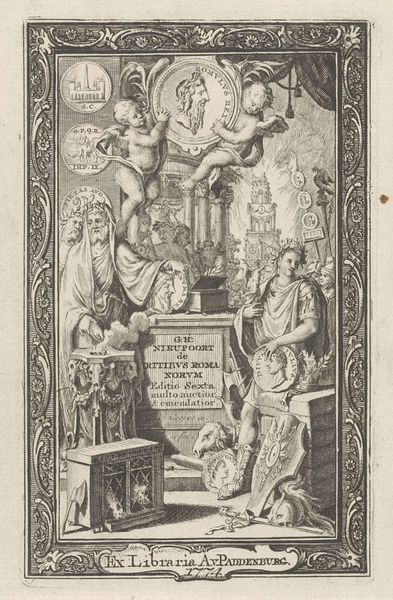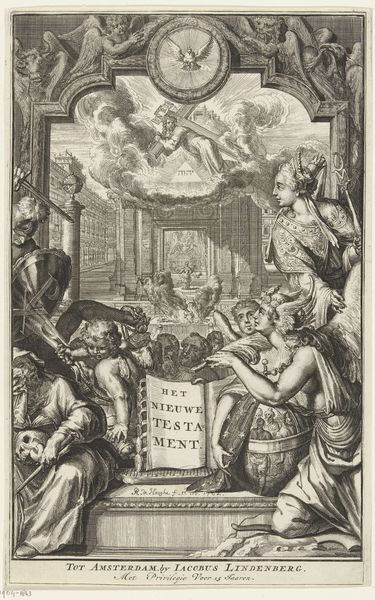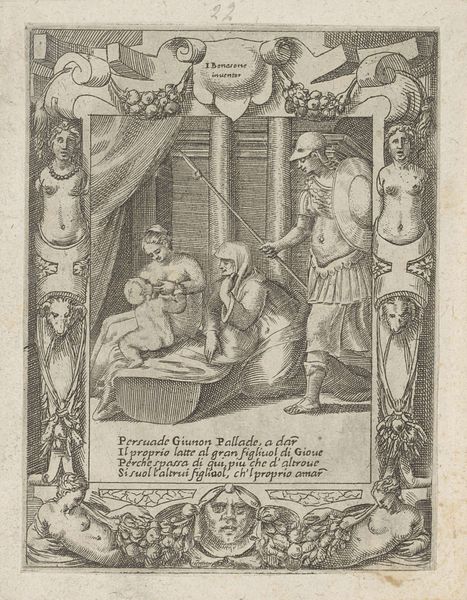
Dimensions: height 138 mm, width 90 mm
Copyright: Rijks Museum: Open Domain
Cornelis van Noorde made this print, Overvloeiend hart, in 1767, using the technique of etching. This process involves coating a metal plate with a waxy, acid-resistant substance, then scratching away the coating to expose the metal. The plate is then bathed in acid, which bites into the exposed areas, creating lines that will hold ink. The etched lines give the image a distinctive, slightly rough texture, quite different from the smooth surface of a photograph. This roughness emphasizes the hand of the artist. The controlled, precise lines speak to the skill of the etcher, who had to carefully manipulate tools and chemicals to achieve the desired effect. The final print is a result of labor-intensive work, reflecting the values placed on craftsmanship and skill in the 18th century. Seen in this light, the print is not just an image, but also an artifact of labor, skill, and social context.
Comments
No comments
Be the first to comment and join the conversation on the ultimate creative platform.
